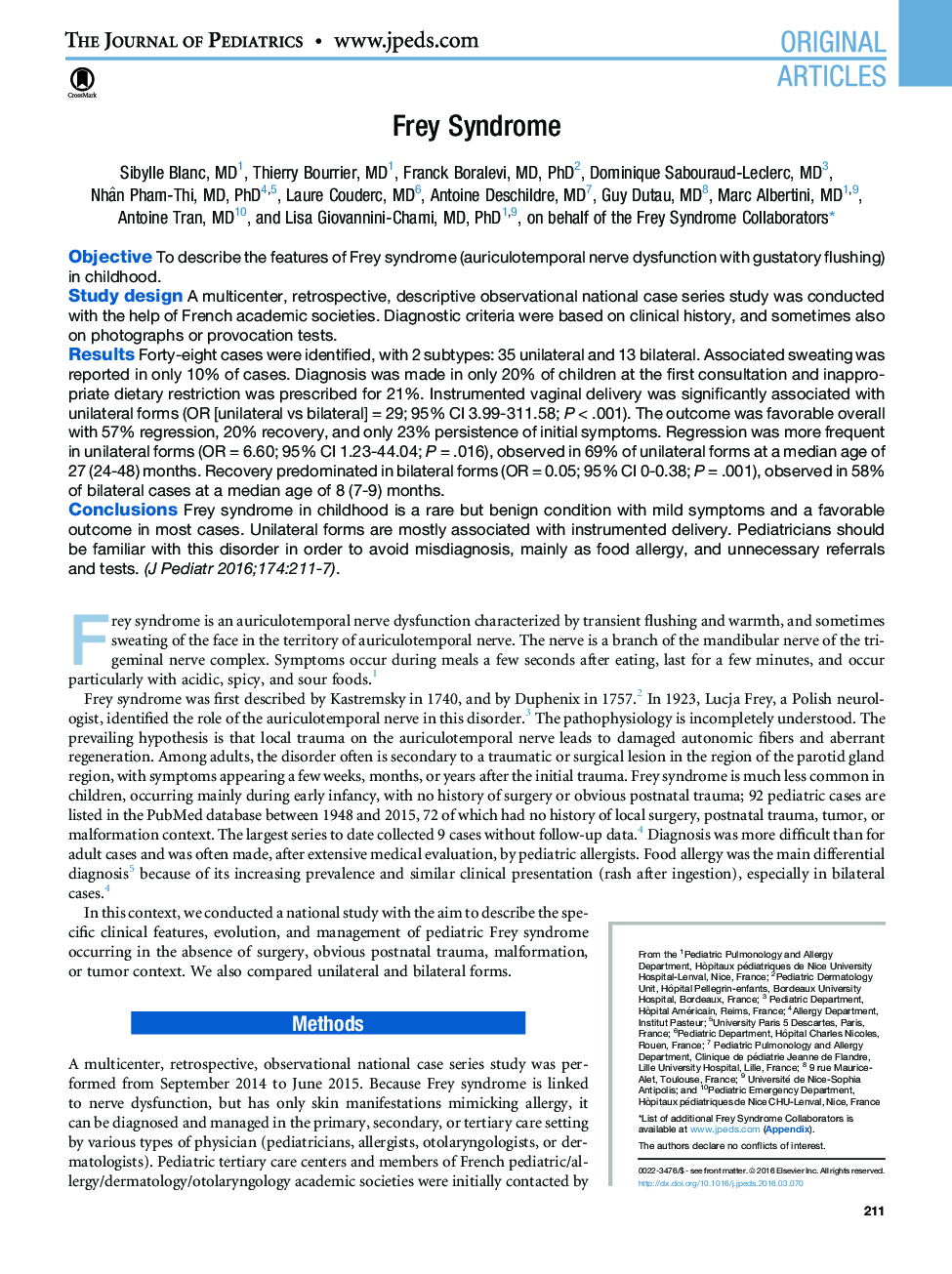| Article ID | Journal | Published Year | Pages | File Type |
|---|---|---|---|---|
| 6218948 | The Journal of Pediatrics | 2016 | 9 Pages |
ObjectiveTo describe the features of Frey syndrome (auriculotemporal nerve dysfunction with gustatory flushing) in childhood.Study designA multicenter, retrospective, descriptive observational national case series study was conducted with the help of French academic societies. Diagnostic criteria were based on clinical history, and sometimes also on photographs or provocation tests.ResultsForty-eight cases were identified, with 2 subtypes: 35 unilateral and 13 bilateral. Associated sweating was reported in only 10% of cases. Diagnosis was made in only 20% of children at the first consultation and inappropriate dietary restriction was prescribed for 21%. Instrumented vaginal delivery was significantly associated with unilateral forms (OR [unilateral vs bilateral]Â =Â 29; 95% CI 3.99-311.58; PÂ <Â .001). The outcome was favorable overall with 57% regression, 20% recovery, and only 23% persistence of initial symptoms. Regression was more frequent in unilateral forms (ORÂ =Â 6.60; 95% CI 1.23-44.04; PÂ =Â .016), observed in 69% of unilateral forms at a median age of 27 (24-48) months. Recovery predominated in bilateral forms (ORÂ =Â 0.05; 95% CI 0-0.38; PÂ =Â .001), observed in 58% of bilateral cases at a median age of 8 (7-9) months.ConclusionsFrey syndrome in childhood is a rare but benign condition with mild symptoms and a favorable outcome in most cases. Unilateral forms are mostly associated with instrumented delivery. Pediatricians should be familiar with this disorder in order to avoid misdiagnosis, mainly as food allergy, and unnecessary referrals and tests.
